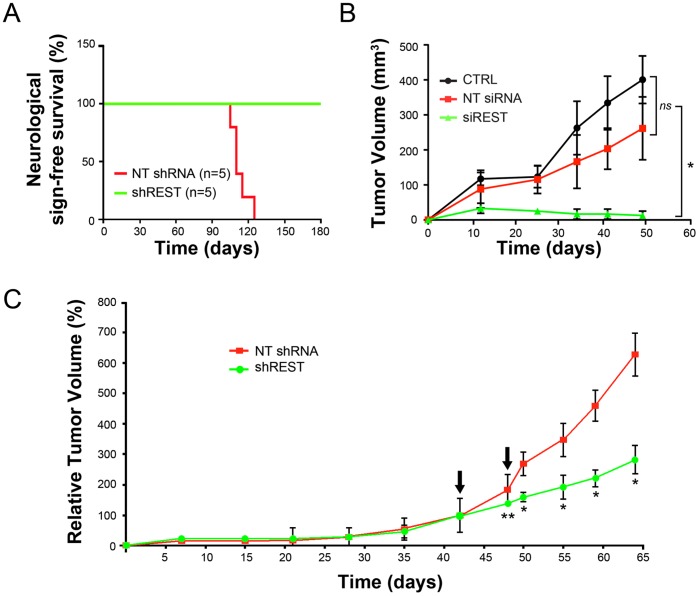Figure 4. REST knockdown abolishes tumor formation by human tumorigenic-competent GBM cells xenograft and impairs in vivo tumor growth of established xenograft tumors.
(A) Kaplan-Meier survival curve of SCID mice transplanted intracranially (n = 4 per each group) with GB7 cells transduced with NT shRNA or shREST lentiviruses (prior to transplantation, cultures were subjected to three days of puromycin selection in order to eliminate non-infected cells). (B) REST siRNA targeting suppresses tumor formation of heterotopically GSC xenografts. Two days after GB7 cells transfection with non targeting (NT siRNA) and REST (siREST) siRNA were bilaterally injected subcutaneously in SCID mice (n = 5 injected flanks per each group). An equal number of non-transfected cells were used as control (mock transfected cells: CTRL). Tumors formation was manifest after 12 days in the CTRL and NT siRNA groups while there was no evidence of tumor formation in siREST group. (C) In vivo intra-tumoral injection of REST shRNA impairs growth of heterotopic established tumors. GB7 cells were subcutaneously implanted into mice flanks and once tumors were established, lentiviral particles carrying either non-targeting shRNA (NT shRNA; n = 4) or shRNA directed against REST (shREST; n = 4) were delivered to tumor site through direct injection (two injections with 7 days interval; arrows in the graph). Tumor growth was unaffected in NT shRNA control group while a marked slowdown of tumor growth is evident in shREST group. Data are means ± s.d. ns not significant, *P<0.001, **P<0.01.

